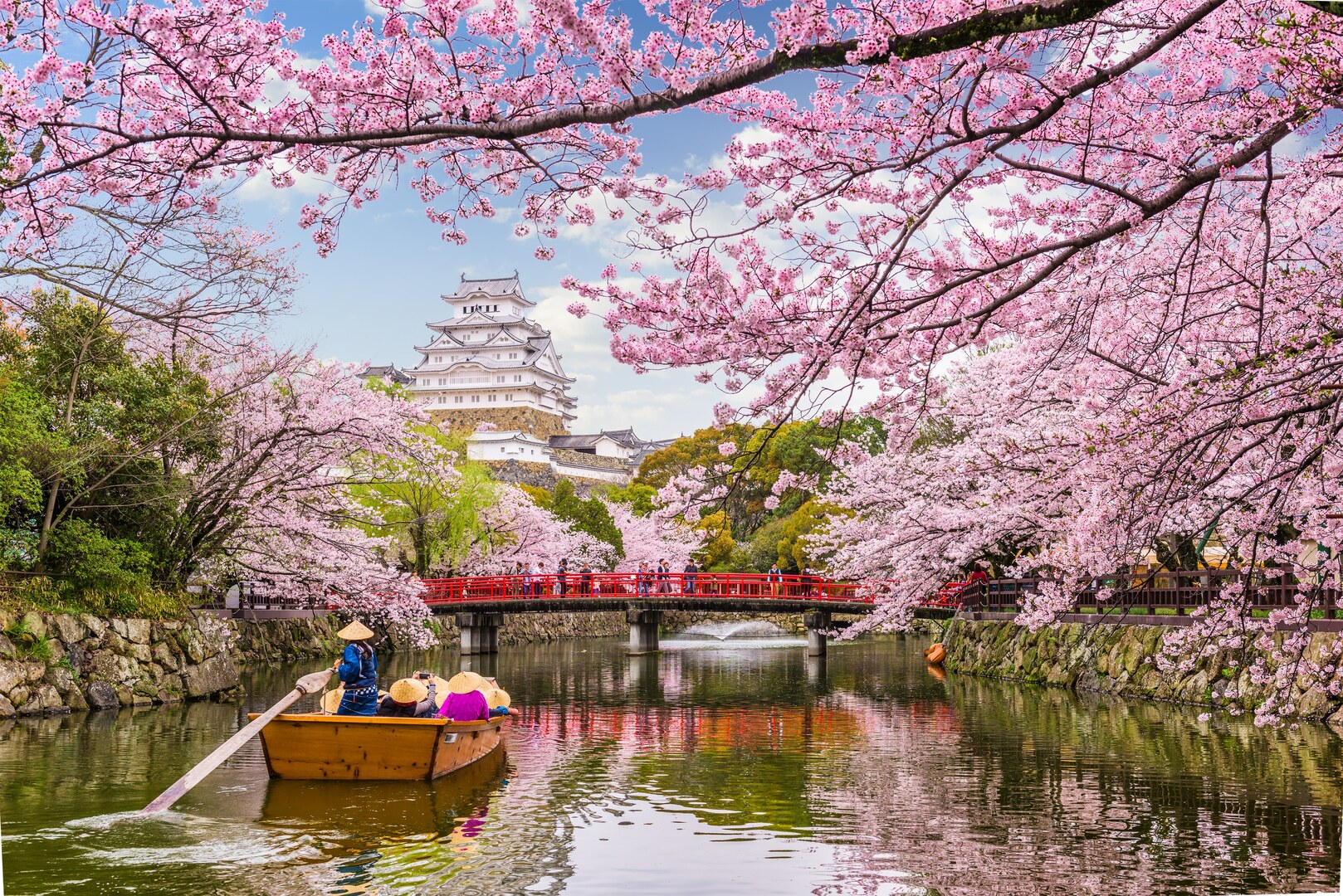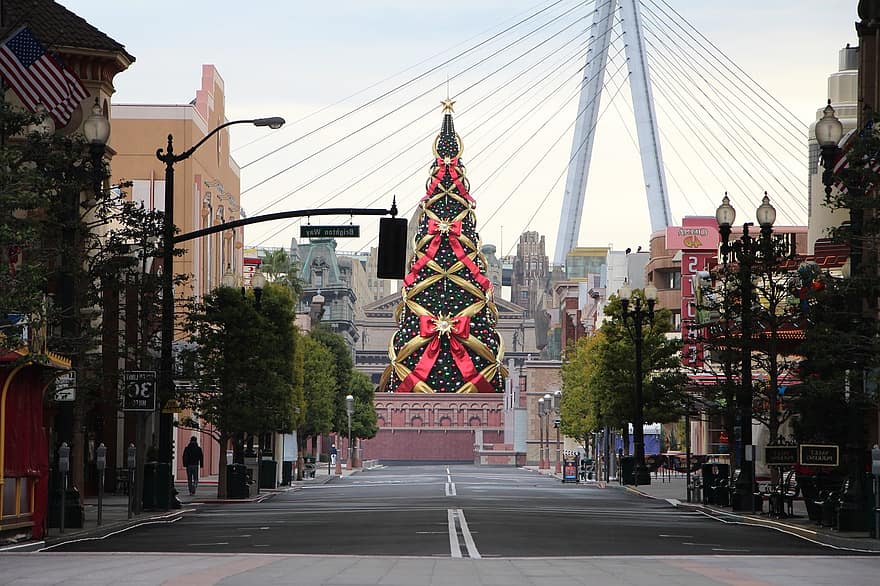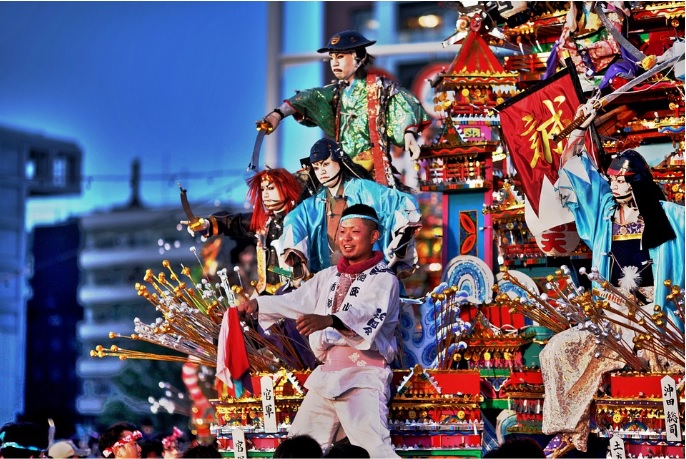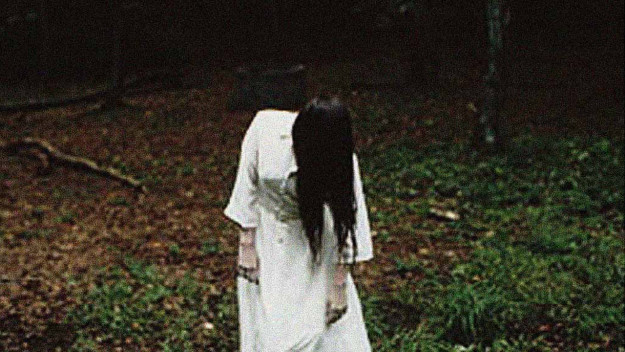
You've probably stumbled upon a previous article here about haunted places you can drop by in Japan. If you're looking for some new thrill or if you wanna scare yourself before going to bed, you're in luck because here are some creepy urban legends that the Land of The Rising Sun has to offer.
1. The Curse of the First Samurai

You can see just about anything in the city of Tokyo... but a samurai's ghost probably shouldn't be one of them. Over the centuries, bloodshed has occured in the Tokyo region, and some city folk believe that angry spirits still wander the streets today. The most notable spirit would be Taira no Masakado, a man who was considered to be the country's very first samurai. Being a minor but successful warlord, Masakado fought against the Imperial government of Kyoto, even building an independent kingdom in the Kanto region and claiming himself as the "new Emperor of all Japan".
In response to his actions, the real Emperor quickly placed a bounty on the warrior's head. After two months of this bounty being set, Masokado died due to being shot in the head with an arrow in what is now Saitama prefecture. He was then decapitated and brought to Kyoto for a public showing. Terrified villagers washed his head, buried it, and built a memorial stone to please the angry spirit. The severed head came to rest on a plot of land now known as Masakado no Kubizuka: 'The Hill of Masakado's Head'. When the Great Kanto Earthquake of 1923 destroyed much of the city, Tokyo's Ministry of Finance took the opportunity to remove the Hill of Masakado's Head, filling in the pond where his Japanese samurai's head was supposedly washed and building a temporary office building on the spot. Within two years, the Minister of Finance and some 14 other employees had perished, felled by accidents, illnesses and other misfortunes.
Even a millennium later, Masakado's reputation lives on. Government leaders have tried to move it from its spot in Otemachi, only to fail each time. In the midst of one of the world’s most technologically advanced cities, this otherwise unassuming plot of land is considered untouchable because of Masakado's thousand-year-old curse.
2. Funa Yurei
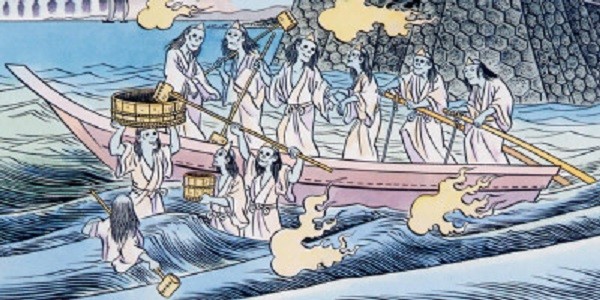
- Funa Yurei are said to be the souls of people shipwrecked and lost at sea in the past. Like most ghosts in Japan, they are depicted as female as opposed to male. Funa Yurei are believed to be very bitter and wrathful toward the living--they rise up from the bottom of the sea to attack boats and ships. This ghost is a water spirit, which is not surprising since the sea plays a major part in Japan for it is an island nation. Their goal is to take the souls of the unsuspecting sailors in order to increase their own numbers--for it is said once killed by a Funa Yurei a man’s soul then becomes one of them. Due to these circumstances, Japanese sailors are extra cautious during stormy weather and rainy days or during a new or full moon for it during these times that the Funa Yurei appears. Stories about these sea spirits were told in each Kuni or province of Japan. It was also believed that things could be thrown into the sea to stop the Funa Yurei. Depending upon the Japanese province these items included: flowers, washed rice, incense, burnt wood, ashes, water, summer beans, and woven mats.
3. Noh Mask

- Commonly used as an accessory in kabuki performances, Noh masks have an disturbing appearance of deceitful and malicious desire. High-end Noh masks have a variety of expressions which change depending on the lighting and direction of the viewer. Used as a means to hide motives, Noh masks are said to absorb negative energy and impure thoughts. Houses of wealth and high status are known to decorate entrance-ways or shrine rooms with Noh masks in order to prevent evil spirits. Either as a precaution to prevent children from wearing the expensive accessory or to not ruin the design, there is a warning which states the Noh mask must not be worn unless on special occasions by a professional. Since the Noh mask has the duty of absorbing negative energy and thoughts, it is believed to take on an entity of its own - an evil spirit which grows hungry for human souls. If someone were to carelessly wear a Noh mask, the soul is sucked from the body; causing the flesh to rot until only a festering corpse remains.
4. Human Pillar
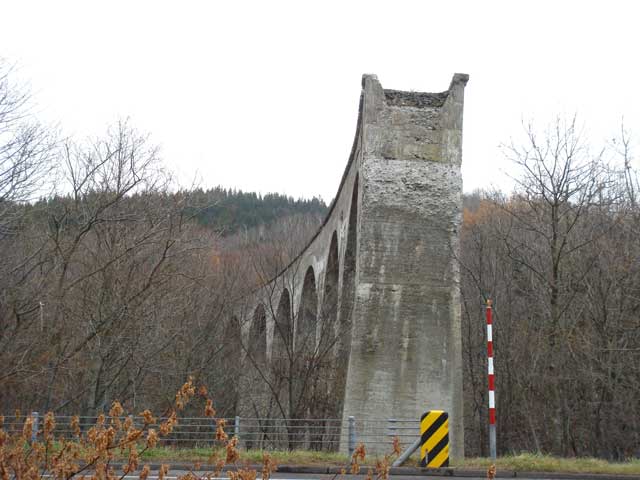
- Hitobashira refers to the gruesome practice of burying a living human being in the foundations of important buildings — this could mean bridges, dams, tunnels, and particularly castles. It was a common practice during large construction projects from ancient times through the 16th century. However there is evidence that hitobashira were still being used in some construction projects during the 20th century. It was believed that the sacrifice of a human soul would appease the nature spirits in an area—particularly the river spirits in areas where flooding was common. They were also used to ward castles against assault, fire, and other disasters both man-made and natural. A few famous castles in Japan are connected to legends of hitobashira. Maruoka Castle in Fukui Prefecture (one of the oldest surviving castles in Japan), is said to contain a hitobashira in the central pillar of the keep.
5. Shirokiya Department Store Deaths

- Shirokiya Department Store fire was an incident that happened at the Shirokiya Department Store in Tokyo back in December 16, 1932. The fire left 14 people dead and 67 people injured. The fire began at about 9:15 am at the toy section a few minutes before the store was to open and spread rapidly on floors 4-8. The staircase filled with smoke like a chimney, cutting off a major escape route. During those times, women who wore traditional kimonos did not wear panties. According to urban legend, saleswomen in kimonos chose not to jump from the roof to safety nets because they were ashamed to be seen from below, and so perished in the fire.
6. Cow Head

- According to legend, a horrific story called "cow head" was discovered in Japan in the 17th century. Up to this day, however, the actual origin of the story is still wrapped in mystery. Rumor has it that upon hearing the dreadful tale, listeners were overcome with fear so great that they trembled violent for days until they died from fright. The cow head story was deemed too dangerous and most existing copies of it were burned years ago. the few copies that survived were cut into sections and distributed across Japan. today, it is believed that only fragments of the original story remain in existence. You won't find the cow head story on the internet, especially not in English. But based on research, the first part of the story goes something like this: there was once a small village long, long ago and it was struck by famine, and so everyone who lived there was starving. they ate all the meat they could get, from cows, pigs, horses, until they settled to consuming their own pets -- dogs, cats, etc. One day, a strange figure wanders into the village. he has the head of a cow and the body of a man; called Gozu. the starving villagers attack him, brutally killing him, ripping the man limb from limb and eating him. from then on, the village became cursed. the summary ends there, and nobody knows how the rest of the story continues from there.
